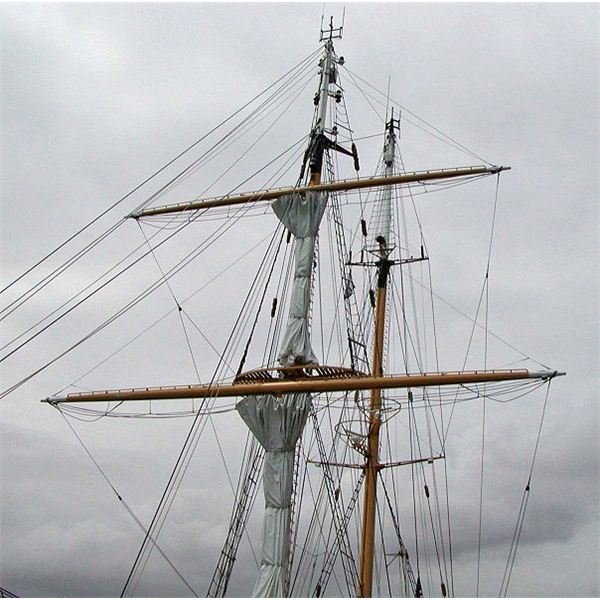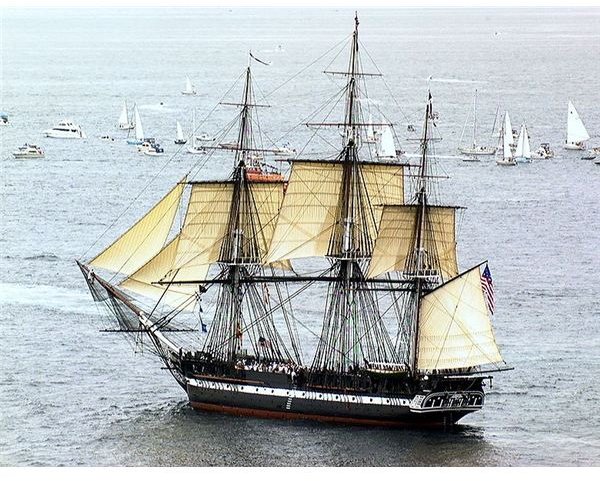The Captain's Mast: Its History and Modern Meaning
Naval Nonjudicial Punishment
As in any organization dependent on members’ obedience to certain rules and other governing principles, maritime agencies and the navies of the world generally have a partially informal process of enforcing discipline among the ranks that does not resort to official legal channels. The United States Navy is no different. The military equivalent to a trip to the HR department goes by several names depending on the service branch - in the Army the Article 15 process covers nonjudicial punishment meted out by officers and senior enlisted soldiers, and the Navy’s equivalent is the “Captain’s Mast”.
The Captain’s Mast is a disciplinary process initiated and carried out by the military chain of command without resorting to criminal proceedings involving the JAG corps or other official legal channels. It is used for infractions of discipline and law that are relatively minor - being late for duty or a mandatory formation, appearing in a deficient uniform, not promptly following the orders of a superior. Few incidents like these warrant the time and effort that goes into a full on court martial, and there is a strong incentive on the part of the officers and senior enlisted personnel in a particular command to take care of discipline in house.
Traditionally the proceeding takes the form of a public meeting held at a focal point on a ship, and all sailors not on duty are expected to be present. What follows is effectively a ritual shaming of offending sailors accompanied by a final determination as to the disciplinary measures to be taken, often involving extra, rather unpleasant duty and a temporary loss of rank. It can be harsh, but is generally preferred by all parties to a court martial proceeding, which can levy harsher sentences.
History of the Captain’s Mast
So why the colorful name as opposed to something dry like the US Army’s Article 15, which generally has the same function and simply refers to the UCMJ section that authorizes military nonjudicial punishments? The answer, according to official Navy sources, goes back to the days of sailing ships, where the United States Navy derives many of its traditions

Before steam engines became standard in the nineteenth century the most efficient means of moving a ship across the sea was to harness the power of the wind by means of attaching a canvas sail to a wooden pole known as the mast. Larger ships would have several masts, and the number of masts as well as their configuration and the shapes of their many sails came to define the types of the various sailing ships, from the clipper to the man-o-war.
Sailor’s lives depended on the function of these masts and sails, and much of the maintenance work needed to keep ships in working order involved these essential components of period vessels. It is no surprise then that they came to be a focal point of naval culture and a convenient meeting place for the crew when one was needed.
Under the Mainmast - Ceremonies for the Crew
The Captain’s Mast appears to have come about as a result of the need to maintain discipline and to address the majority of the crew at once. Meetings of this nature were held under the mainmast, and eventually any crew meeting came to be known as a mast. The masts eventually began to be named according to the officiating officer’s rank, and so there are admiral’s masts and chaplain’s masts.
The Captain’s version was traditionally held prior to religious services and served as both a disciplinary event in front of the entire crew and as a forum where exemplary behavior could be praised or official news shared with the crew. Once it became so common to be held as a tradition, even as the vessels switched from sail to steam power the event was still held in a convenient meeting area, and given the same name.
Sources and Image Credits
United States Navy Official History: Origin of Navy Terminology
Navyreserve.com Naval Glossary
Images from Wiki Commons, Image of Brigantine Mast by Stan Shebs, Image of USS Constitution by the US Navy.
